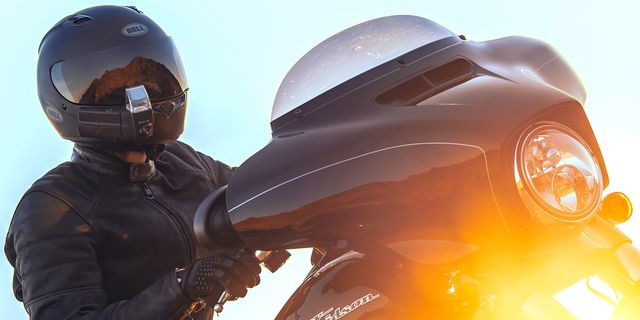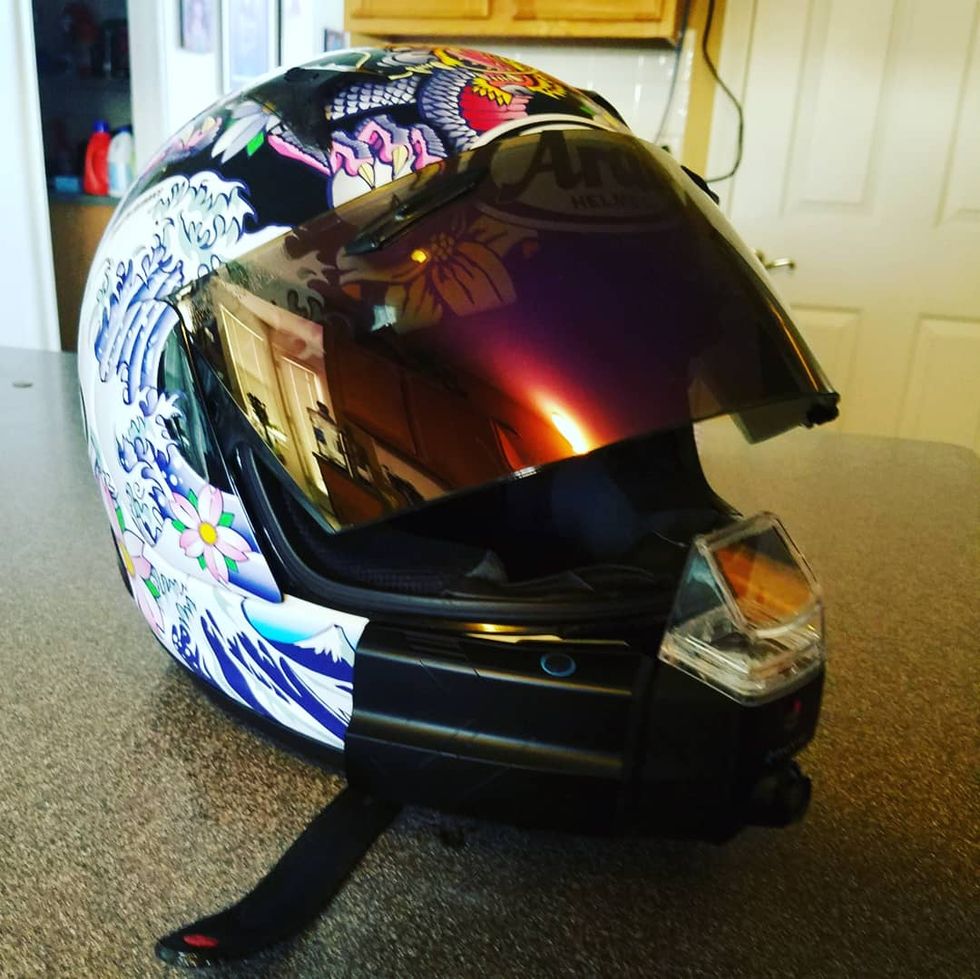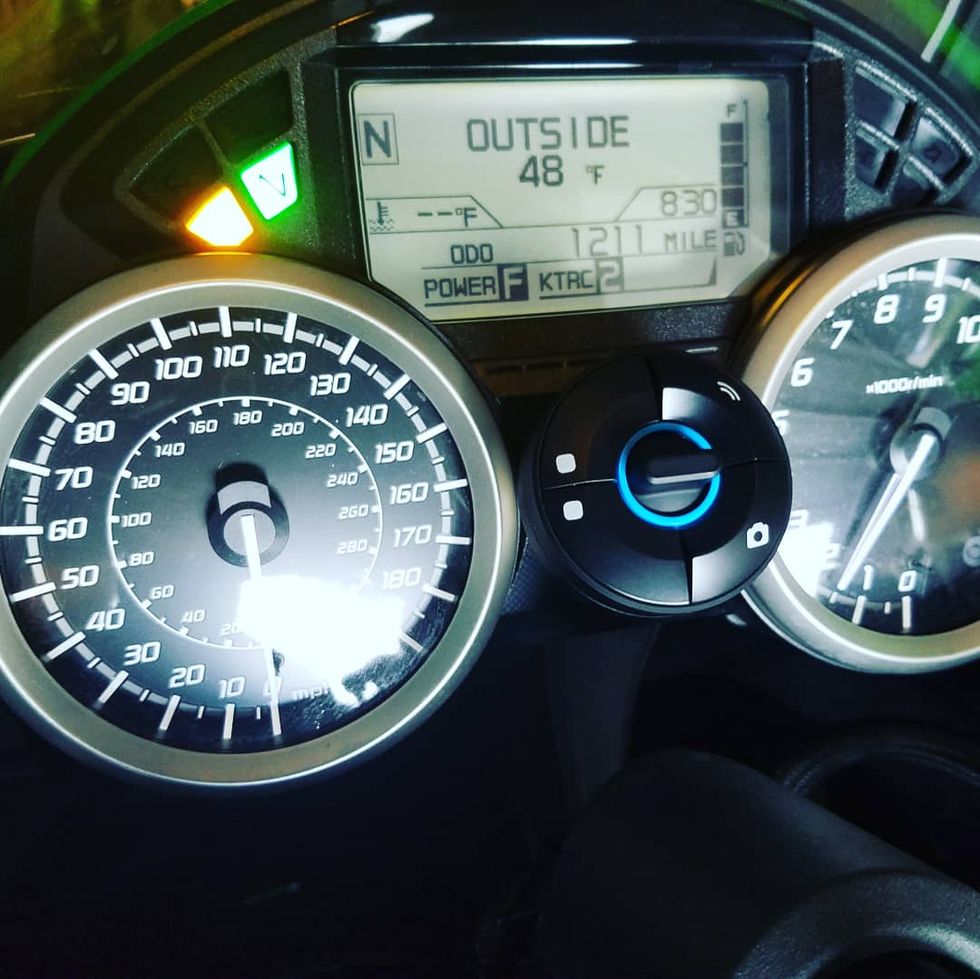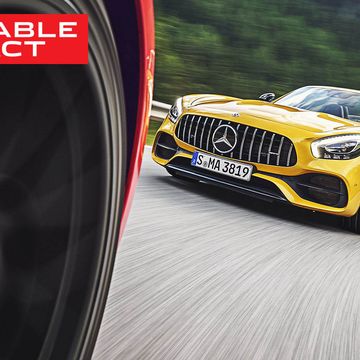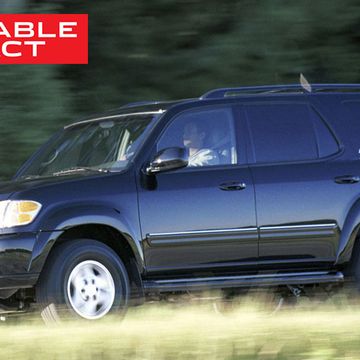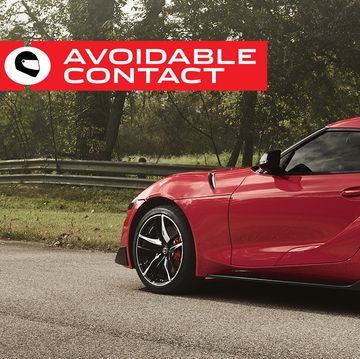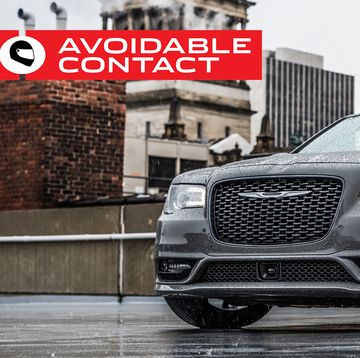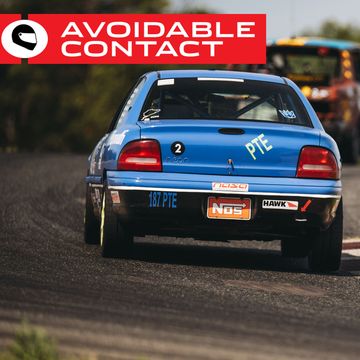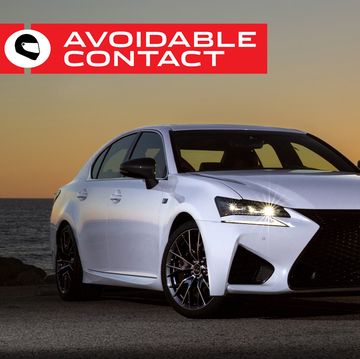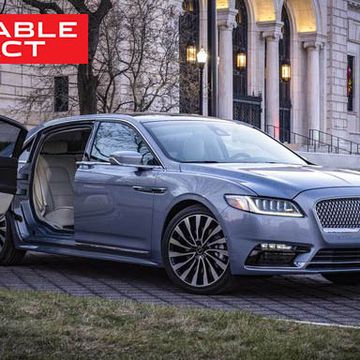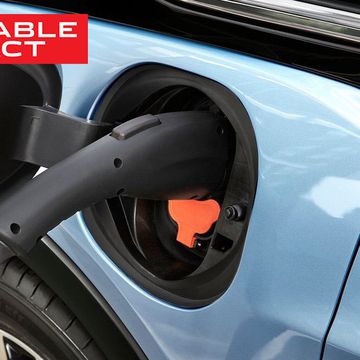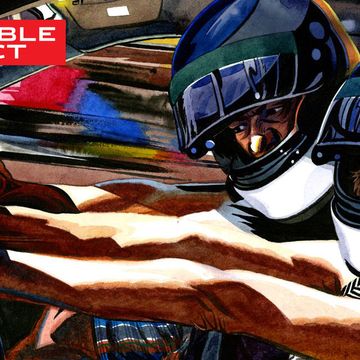In the words of Lincoln Steffens, I’ve seen the future, and it works. Maybe a better way to say it would be, I’ve seen the past, and it is going to work again. The NUVIZ heads-up display allows motorcyclists to have access to the same level of navigation and infotainment capability that new cars had a decade ago. That’s not damming with faint praise, because those cars needed considerably more space, power, and expense to provide that capability. The NUVIZ does it all in a flip-phone-sized module that goes on your helmet.
If you're a motorcyclist, you're aware this sort of thing exists. If you're a "cager" who wouldn't dream of trying a bike, you should still be aware. Otherwise, it’s going to freak you out when you see it on the helmet of the motorcyclist next to you. You should also be aware that the NUVIZ gives the rider the chance to photograph your car or record your behavior on video.
That ability to effortlessly record your ride or to take snapshots as you wish is something that I would have been grateful for many times in the past few years. From what I can see, drivers are stepping up their aggression towards motorcyclists just as they are stepping up their aggression towards other drivers, particularly when it comes to lane changes and tailgating.
Many of the bikers I know are now using a GoPro or similar small mounted camera to record their rides, just in case their next of kin want to sue the CUV driver who inadvertently kills them. There’s a nontrivial amount of hassle involved in setting up such a camera. You have to take the camera out and charge it, you have to rotate media cards to keep the camera from shutting off due to lack of space, you can’t see what the camera is seeing as you record, and you have to figure out a way to mount it that won’t injure you if you crash. This last concern is a big one; after Michael Schumacher's tragic skiing accident, investigators suggested his helmet-mounted camera might have contributed to the severity of his brain injury.
The NUVIZ, designed by a Finnish-American firm but made in China, addresses all of those concerns, with the added bonus of in-helmet audio and a remarkably good navigation system. It works like so: The main unit, which is bulky but not heavy, attaches to your helmet with an adhesive pad. It won’t work with all helmets, but it was compatible with the three different models of Arai that I use on a regular basis. You place the unit so it is in line with your right eye.
There is a small controller that can mount on your handlebars if you have a cruiser, touring, or standard bike. For my Kawasaki ZX-14R, which has no extra cutout space in the fairing, I had to use the alternative mount, also supplied with the unit, and put it on my dashboard. You can also just put the controller in the pocket of your jacket if you like; it’s possible to identify the five buttons by feel. Finally, there’s a pair of speakers and a microphone that you stick in your helmet and connect to the unit.
The camera function is accessed through the controller; it shows you what the camera sees in the heads-up display and you can choose to take snapshots or record video. For everything else, you will need an Apple or Android phone. The NUVIZ can play audio from your phone, which it does very well, and you can skip forward a track if you like. It can also serve as a hand-free phone system, although in that respect it’s not as good as dedicated systems from other companies. Photographs taken from the NUVIZ will be automatically synced with your phone. To get video off the system, you’ll need a USB cable and a laptop.
The unique feature, however, is the navigation system. You select a destination in the NUVIZ app on your phone and start riding. The heads-up display will show you turn-by-turn navigation and give you voice directions. I spend an afternoon riding around my neighborhood, deliberately disobeying the system to see how long it would take to catch up and recalculate the route. In that regard, it’s as good as the best in-car systems.
At the end of each ride, NUVIZ will tell you a few facts about your ride, including maximum speed. As I discovered while showing my wife the application, that last part can be a real chance for you to have a significant discussion with your significant other about how exactly you hit 119.88 mph on a nine-mile commute to work. (The answer: I was running late, and, um, it was on a racetrack?) I had no excuse because the unit will gently “ping” in your ear every time you exceed the speed limit. For a perpetual adolescent like me on a 208-horsepower motorcycle, that “ping” appeared with Tito-Puente-like frequency.
Some reviews of the NUVIZ have focused on what it doesn't do: It doesn’t offer you the ability to change your destination en route, it doesn’t allow you to dial by voice unless you’ve already saved the contact in the app, and it doesn’t allow you to browse all the music on your phone. Some of those features may come in future updates, and some might not.
Virtually everybody agrees, however, that the heads-up display is a revelation. It projects the image at a virtual 13-foot depth, meaning that even farsighted 46-year-olds like me can see it instantly without trouble. It works in bright sun and twilight and supposedly even in the rain. There’s just one caveat: You have to really work carefully on positioning the unit on your helmet in order for it to work. Just a half-inch off can render the display unreadable.
In my opinion, the NUVIZ is far better than the navi-tainment systems fitted to the big touring bikes, and it’s also better than the time-honored alternative of using Google Maps and a set of earbuds. I have just one tiny little concern: I had to remind myself not to be distracted by the system. It can show you a map in real-time, or your speed via GPS, or various other functions. I found myself watching the screen frequently while I was riding. Using the NUVIZ properly will require a bit of discipline, made all the more annoying because, as a motorcyclist, you have the chance every day to sit and watch four-wheel motorists all around you not exercising that discipline.
It’s a poor workman who blames his tools. The NUVIZ really works, and if it’s not cheap at $699.95 it’s also not much more expensive than a handlebar-mounted GPS unit and a Bluetooth headset. With that said, I hope that heads-up motorcycle systems don’t develop too much further. I don’t want the ability to surf the Web or play Fortnite while I’m riding a motorcycle. I’m on two wheels, in part, to get away from all that—but I’m afraid not even a ZX-14R is fast enough to escape the future.
Jack Baruth is a writer and competitor who has earned podiums in more than fifteen different classes and sanctions of automotive and cycling competition, in both amateur and professional capacities, as well as an enthusiastic hobbyist musician and audiophile who owns hundreds of musical instruments and audio systems. His work has appeared in Bicycling, Cycle World, Road & Track, WIRED, Wheels Weekly, EVO Malaysia, Esquire, and many other publications. His original design for a guitar, the Melody Burner, has been played by Billy Gibbons, Sheryl Crow, and others.
